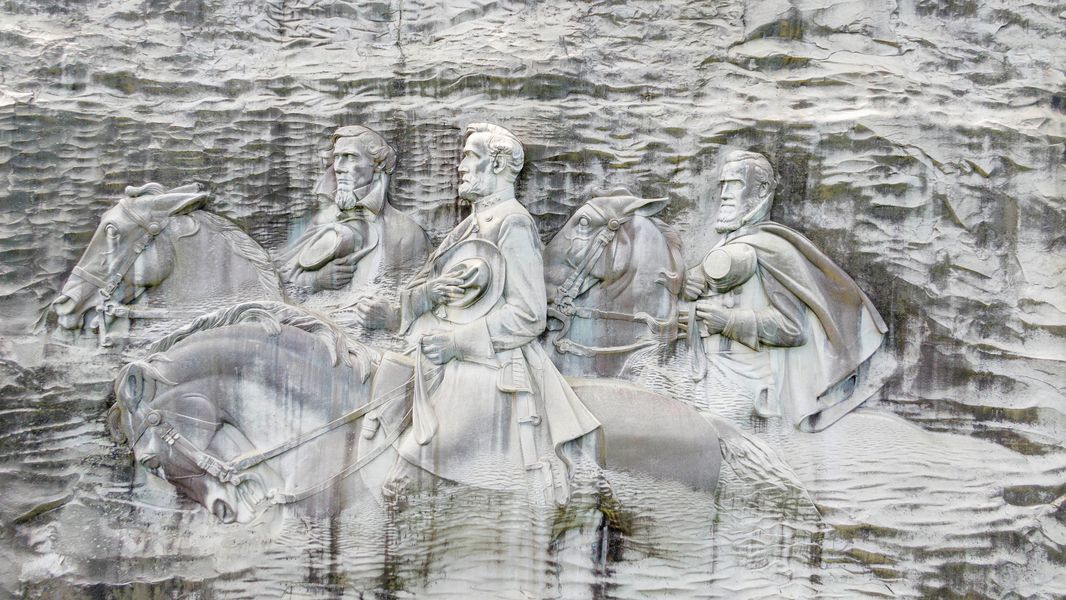The Hatfield and McCoy Feud is one of the best known legends in the country, well beyond its roots in West Virginia and Kentucky. Historian Philip Hatfield looks at how the Civil War, years before the feud itself, may have influenced the feudists themselves. Nearly all of the men involved, on both sides, fought in the war for the Confederates.
Hatfield spoke with Eric Douglas to discuss his book, “The Other Feud: William Anderson ‘Devil Anse’ Hatfield in the Civil War.”
Douglas: Tell me about Devil Anse’s Civil War history. Tell me tell me what he did throughout the Civil War.
Hatfield: Devil Anse was, like many of the men in the Tug River Valley area, required to serve in the militia before the Civil War. That was just kind of an annual event. They would get together for two or three days for muster once a year. Those events typically wound up more of a picnic with a drunken brawl than a real military event. That was about the extent of the antebellum experience that the militia had. When the war came, Devil Anse was in the 129th Virginia Militia. And that was a regiment that was composed of men from Logan, some men from Wayne, and what later became Wyoming County.
They were in a few small actions at Boone courthouse, Wayne courthouse and southwestern Virginia, which became West Virginia later. He was part of the Virginia State Line when that regiment disbanded. In 1863, into 1864, he was in the 45th Battalion Virginia Infantry, which was a regular Confederate unit. It wasn’t a state organization, like the VSL.
I was not able to pinpoint the exact date, but sometime in the fall of 1864, Devil Anse deserted. There were over 300 desertions in that regiment around the same time, and essentially what was going on they received word that they were getting their homes and their farms burned out and attacked by the Federal Army. So they left to go home to protect their families.
Douglas: So they started saying “I need to go home and protect my own land. I’m not going to fight for the Confederacy anymore.”
Hatfield: There’s a lot of evidence that the soldiers were getting letters from home and news of Vicksburg falling into Union hands. After Gettysburg, it was pretty much a lost cause and the soldiers in southwestern Virginia were beginning to realize this.
When you’re getting letters from home saying, “Hey our neighbor’s farm was burned out, or the Federals are stealing our cows and our horses,” it was desertion en masse.
Douglas: Devil Anse served in the Civil War up through 1864. And then back home through the end of the war. How did that go on to affect the feud later?
Hatfield: There’s an argument in the literature known as the legacy theory. There’s a group of researchers who would attribute the feud violence to economic factors during the Reconstruction period, rather than roots in the Civil War. A lot of this I’ve reviewed in the book, but there’s some problems with that. Economic factors were certainly part of reconstruction in Appalachia. But the restoration of the Union didn’t really apply in that part of the country. The folks there weren’t really willing to go along with the new program. For years, Confederates weren’t allowed to vote. Confederate Veterans couldn’t hold office. There were a lot of fights on Election Day.
All 14 of the men in the feud, from both families, were also Civil War veterans. And, you know, just from what we know about the effects of combat on modern veterans, there’s a whole psychology literature that deals with combat stress or PTSD. It’s very well-researched now. But those things leave an indelible effect on people and the feudists really got their education in warfare from these partisan guerrilla missions.
Douglas: Do I remember correctly that the Devil Anse was a big timber guy?
Hatfield: He became successful in the timber industry after the war. I don’t think he was wealthy by eastern Virginia standards, but he was successful and owned quite a bit of land and had a fairly large group working for him. And there was some animosity between him and Randall McCoy that had to do with business transactions after the war, but that is admittedly conjectural.
Douglas: You made the point several times throughout the book that there were a lot of family stories that have no basis in reality — that these guys were at Gettysburg and other battles, but they weren’t even near them.
Hatfield: They weren’t even close. The Gettysburg thing has its roots in one of the McCoy family members, Truda McCoy. She mentioned that Devil Anse and Ellison were part of the Logan Wildcats, which was a pre-war volunteer company. But that became Company D of the 36th Virginia and neither Devil Anse nor Ellison appear on the muster rolls. They weren’t in that regiment. Yet that story gets kicked around in almost all of the feud literature.
“The Other Feud: William Anderson ‘Devil Anse’ Hatfield in the Civil War” is available from 35th Star Publishing.
–wvpublic.org



